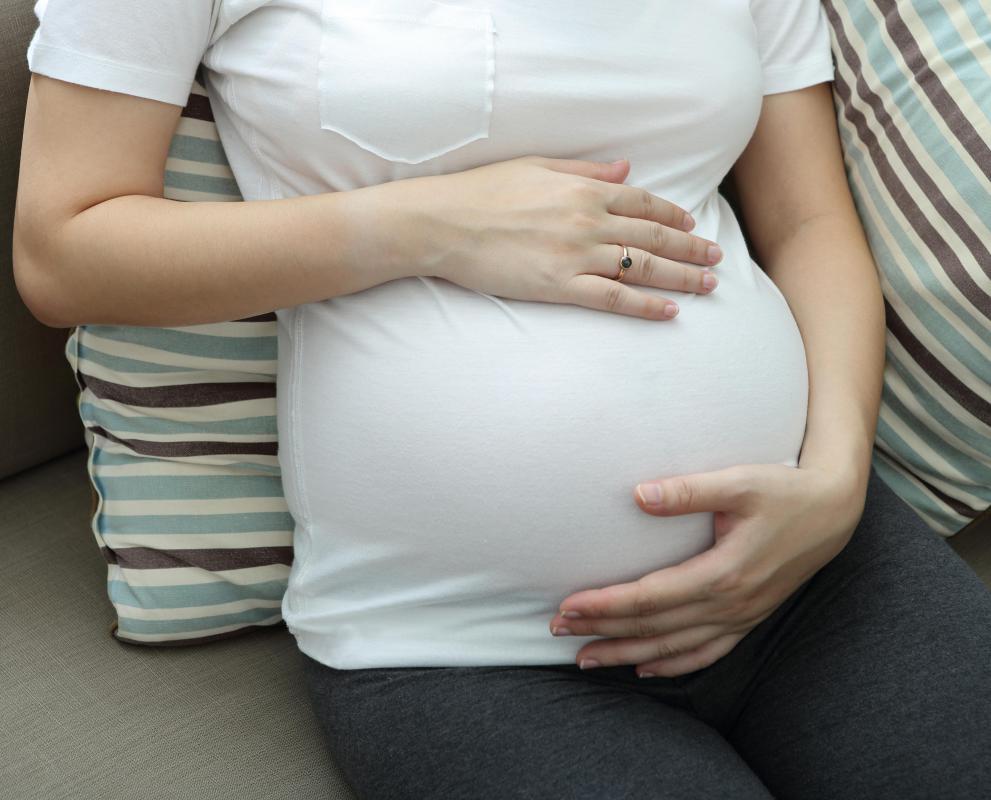At WiseGEEK, we're committed to delivering accurate, trustworthy information. Our expert-authored content is rigorously fact-checked and sourced from credible authorities. Discover how we uphold the highest standards in providing you with reliable knowledge.
What is VATER Syndrome?
VATER syndrome is an acronym describing a constellation of birth defects that strikes 16 of every 100,000 live births. It is thought to be associated with a genetic mutation, but the exact gene responsible is yet unknown. To be classified with VATER syndrome, babies must have at least three of the following characteristics: vertebral anomalies, anal atresia, cardiovascular anomalies, tracheoesophageal fistula, esophageal atresia, renal and/or radial anomalies, and limb defects. Many of the defects can be surgically corrected; infants with this condition often go on to develop normally.
About 70% of babies with VATER syndrome have some type of spinal column defect. The defect may include smaller-than-normal or half-formed vertebra. Vertebral anomalies are not life-threatening, but do create an increased risk for a type of spinal curvature called scoliosis.

Anal atresia is a birth defect in which the anus is imperforate and body waste cannot be expelled. This condition requires surgery almost immediately. A few operations may be needed in order to connect the intestine and anal canal correctly. More than half of all babies born with VATER syndrome have anal atresia.
As many as 75% of babies with VATER syndrome have congenital heart disease. Tetralogy of Fallot, atrial septal defects, and ventricular septal defects are the most commonly seen issues. Babies with VATER syndrome sometimes have truncus arteriosus or transposition of the major arteries.

Esophageal atresia with tracheoesophageal fistula afflicts 70% of infants with this syndrome. In esophageal atresia, the esophagus is unopened and food cannot pass into the stomach. A tracheoesophageal fistula refers to a hole between the trachea and esophagus. About 33% of babies with tracheoesophageal fistula also have congenital heart disease.
The umbilical cord normally contains two arteries and one vein. In VATER syndrome, approximately 35% of infants have umbilical cords with only one artery and one vein. This can indicate renal, or kidney, problems or other urological issues. Sometimes the kidneys are incompletely formed or urine is unable to pass out of the body. If not corrected, kidney failure may result at an early age.

Radial aplasia, in which the radius bone of the forearm is missing, fused fingers, extra fingers, or a displaced thumb occurs in as many as 70% of all VATER syndrome births. If only one limb is affected, there is a good chance that the kidney on the same side of the body will also have a defect. If both limbs have a defect, both kidneys may be impacted.

Most of the defects are correctable with surgery either immediately following birth or during the first few years of life. These babies are often born small and have a hard time gaining weight; once the congenital anomalies are corrected, however, they grow up to live normal, productive lives. Even though researchers believe that this condition has a genetic connection, families rarely have more than one child with this congenital defect.
AS FEATURED ON:
AS FEATURED ON:


















Discuss this Article
Post your comments